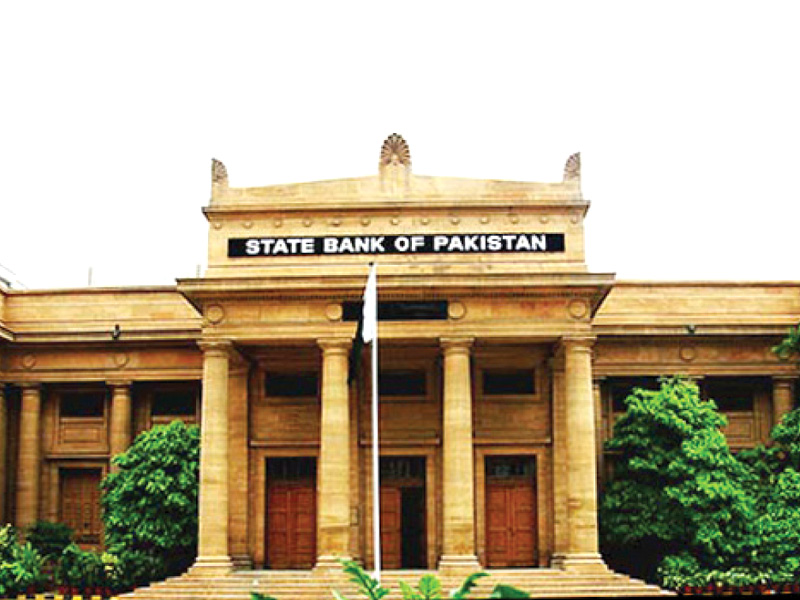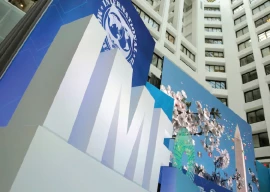
“I was expecting a 25-basis-point (bps) raise because of the recent rise in inflation in the country,” commented National University of Sciences and Technology (NUST) School of Social Sciences and Humanities Dean Dr Ashfaque Hasan Khan.
When the central bank kept the policy rate unchanged two months ago, the inflation had not looked threatening, which was not the case now, said Khan. By raising the rate by 25 bps, the SBP could have given the signal to the market that it was watching the developments closely, he added.
In a press release issued to announce the monetary policy decision, the SBP, however, cited the rise in the Consumer Price Index (CPI) inflation over the last one year, but believed that the inflationary environment was manageable.
The year-on-year CPI growth rose from 1.6% in October 2015 to 4.2% in October 2016 and the core inflation, which excluded the volatile food and energy prices, was inching upwards as well, it stated.
These movements were also partially mirrored in the Institute of Business Administration-SBP survey of November 2016 that showed improvements in current and expected economic conditions along with a moderate rise in consumer confidence and inflation expectations for the next six months.
This manageable inflationary environment over the near term bodes well for the current growth momentum. A healthy uptick in private-sector credit for fixed investments will further support future growth.
Consequently, the improving aggregate supply was expected to better cater to the rising domestic demand in fiscal year 2017. However, international oil price movements may impact the inflation, the SBP added.
The current macroeconomic stability and net retirement of government borrowings from scheduled banks resulted in relatively easy liquidity conditions in the money market, it said.
Some support also came from the increase in bank deposits as the growth in currency in circulation receded back to its past levels after rising exceptionally high in FY16.
Volatility in the interbank market continued to remain low and the overnight money market repo rate stayed close to the policy rate in the post-September 2016 monetary policy period.
The central bank pointed out that the continuous build-up of external buffers by Pakistan over the last three years had improved its resilience against external uncertainties. This is reflected in the current level of foreign exchange reserves which cover more than four months of projected import payments.
In addition to this, the recent improvement in Pakistan’s sovereign rating along with official financial inflows is projected to sustain the foreign exchange reserves.
However, unpredictability of non-trade flows will influence the current account in particular and the external sector in general during the rest of FY17.
The SBP announces the target rate every two months, which serves as the benchmark interest rate for overnight funds in the interbank market. It is one of the tools the central bank uses to ensure price stability in the economy.
Decreasing the target rate poses the risk of high inflation, but it also stimulates economic growth by making credit cheaper. In contrast, raising the target rate restricts the level of liquidity, which subdues consumer prices in the economy.
The central bank tries to strike a balance by targeting the overnight cost of funds at a level that promotes maximum economic growth without causing high inflation.
The Monetary Policy Committee (MPC), which is headed by the SBP governor and includes three independent economists as external members, takes the decision to revise or maintain the target rate after taking into account factors like anticipated inflation, foreign exchange reserves, commodity prices, etc.
The MPC had reduced the target rate by 0.25% in its policy announcement in May. Cumulatively, the MPC cut its target rate by 0.75% in fiscal year 2015-16, following a reduction of 3% in 2014-15.
Published in The Express Tribune, November 27th, 2016.
Like Business on Facebook, follow @TribuneBiz on Twitter to stay informed and join in the conversation.

1732102112-0/BeFunky-collage-(77)1732102112-0-165x106.webp)




1732084432-0/Untitled-design-(63)1732084432-0-270x192.webp)










COMMENTS
Comments are moderated and generally will be posted if they are on-topic and not abusive.
For more information, please see our Comments FAQ